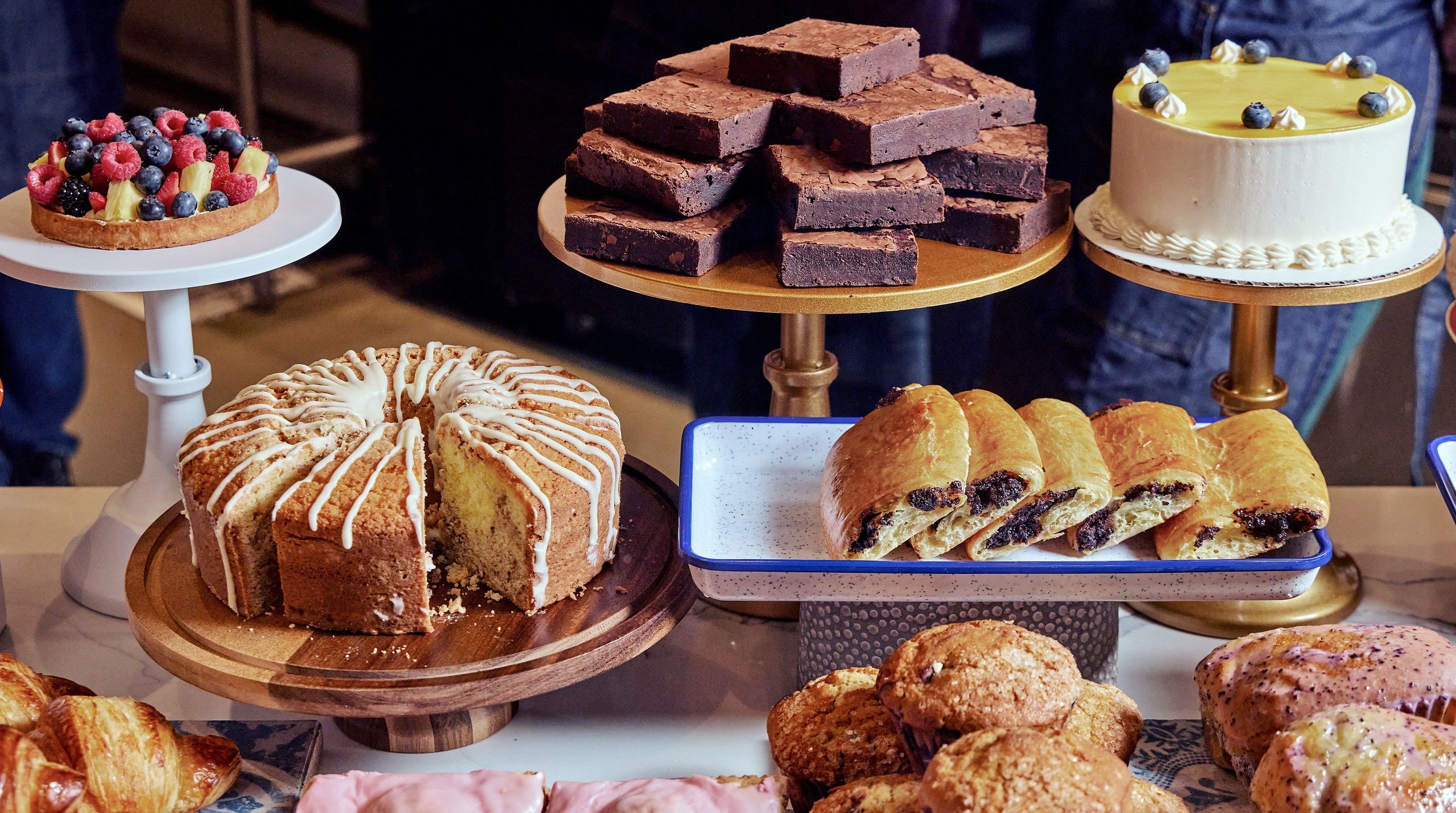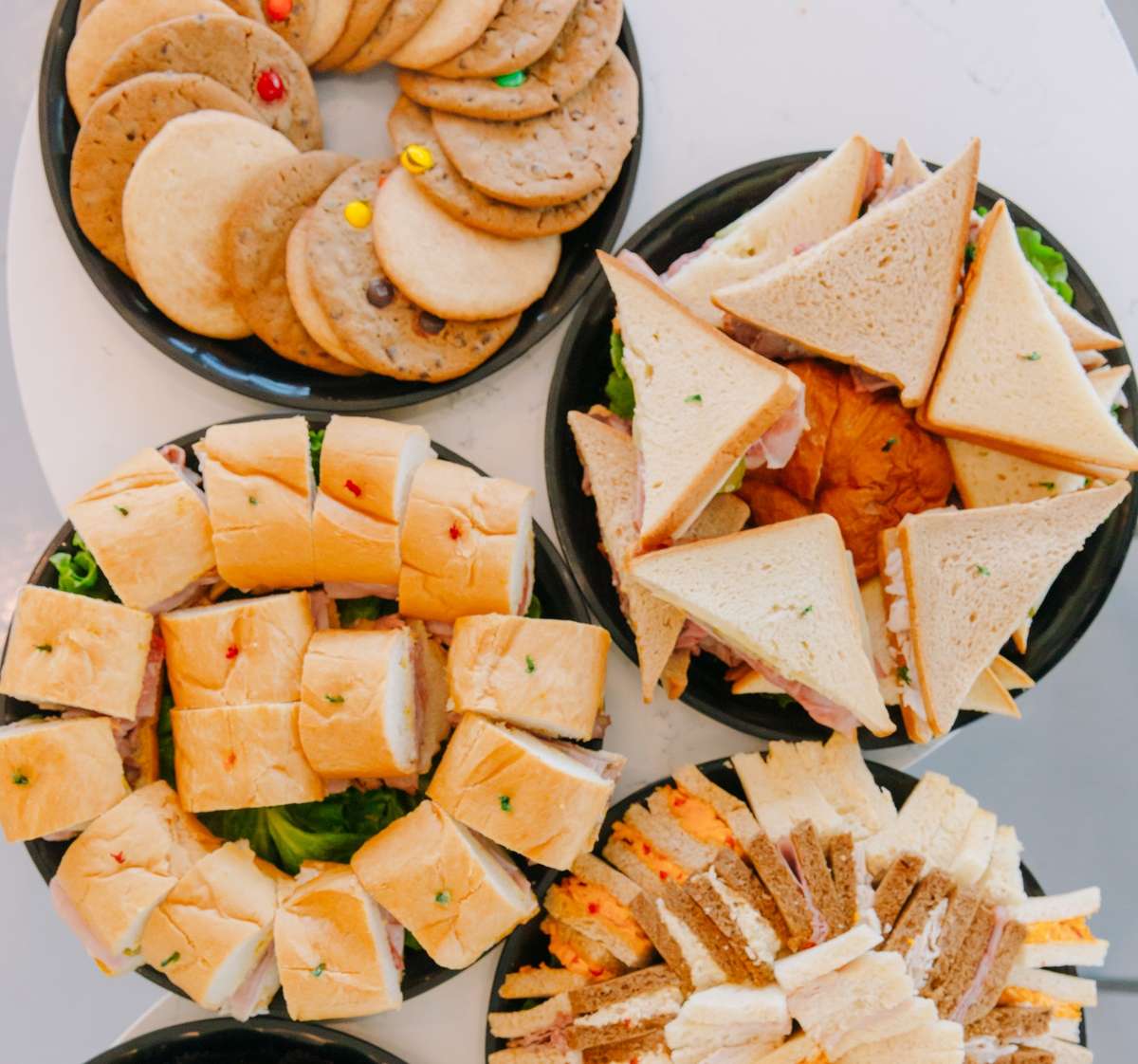Recognizing the Art of Pastry Shop Products: From Freshly Baked Breads to Irresistible Pastries and Finger Foods
The complex art of bakery products includes a spectrum of strategies and active ingredients that change standard components into culinary delights. From the science behind the best loaf of bread, where fermentation and gluten growth play crucial duties, to the finesse required for creating layered pastries, each aspect exposes an engaging story of workmanship. The convenience of finger foods highlights just how taste and structure can be artfully integrated to engage diverse preference choices. As we check out these aspects, one might question: what underlying principles govern the success of these beloved creations?
The Science of Bread Making
At the heart of every loaf of bread exists a fascinating interplay of chemistry and biology. The procedure of bread making begins with the combination of flour, water, yeast, and salt-- each component playing a critical role in the final item.
Yeast, a living microorganism, ferments the sugars present in the flour, creating co2 and alcohol in the procedure. The co2 gas creates bubbles in the dough, triggering it to climb and develop a light structure. The temperature level and moisture throughout fermentation considerably affect yeast task and, subsequently, the bread's flavor and structure.

Mastering Pastry Strategies
Just how can one achieve the delicate equilibrium of appearance and flavor that specifies outstanding bread? Mastering bread methods needs a deep understanding of active ingredients, techniques, and the science behind them. Essential to this craft is the option of premium active ingredients-- flour, butter, sugar, and eggs-- each playing a critical duty in the last item's flavor and structure.
The strategy of lamination, which involves folding layers of dough and butter, produces the wanted flakiness in pastries like croissants and puff bread. Accuracy in temperature is crucial, as butter needs to remain chilly to make certain optimal layers. Correct mixing methods, such as the creaming method for cakes, make sure also unification of air and fat, resulting in a light and airy crumb.
Furthermore, preserving the ideal moisture degrees throughout cooking can significantly affect the outcome, guaranteeing that breads increase appropriately and attain that golden-brown coating. Ultimately, the art of bread additionally requires perseverance and technique; each effort boosts one's skill and understanding of the detailed equilibrium called for to develop alluring breads that delight the senses. Mastery in these techniques ultimately distinguishes a competent pastry cook from an amateur.
Kinds Of Finger Foods
The globe of culinary delights expands past pastries to encompass a wide selection of finger foods, which are commemorated for their comfort and flexibility. These bite-sized treats are excellent for celebrations, using a range of flavors and appearances that accommodate diverse tastes.

On the sweeter side, small tarts and bite-sized cupcakes use a fascinating coating to any meal, appealing to those with a wonderful tooth. Cheese and charcuterie boards serve as an innovative choice, permitting visitors to personalize their bites with an assortment of meats, nuts, fruits, and cheeses.
Taste Profiles in Baking
Baking is an elaborate dance of flavor accounts that incorporates pleasant, mouthwatering, and umami notes to produce a harmonious experience for the palate. Understanding these accounts is crucial for bakers looking for to raise their developments.
Sweetness often works as the structure in baked products, with sugars, fruits, and natural sugar boosting flavor depth. Active ingredients such as delicious chocolate and caramel present intricate wonderful notes that can either dominate or enhance other flavors. Alternatively, mouthwatering aspects, frequently located in pastries and breads, give equilibrium and contrast. try this Active ingredients like flavors, natural herbs, and cheeses can change a simple dough right into a diverse taste experience.
Umami, frequently ignored in cooking, plays a significant function in improving flavors. Components such as aged cheeses, fermented items, or perhaps specific nuts add to a savory depth that boosts total taste.
Furthermore, the interaction of level of acidity from ingredients like buttermilk or citrus passion can lighten up tastes, providing a rejuvenating counterpoint to sweet taste. By attentively combining these flavor profiles, bakers can craft items that reverberate with varied palates, creating a remarkable cooking experience. Ultimately, grasping taste accounts is vital to innovation worldwide additional resources of baking.
Necessary Cooking Devices and Active Ingredients
Understanding flavor profiles in baking sets the stage for choosing the right tools and components that assist in the development of outstanding baked items. The structure of effective cooking hinge on having crucial devices available. Trick things consist of blending bowls, determining cups, and spoons for precision, as well as a sturdy stand mixer or hand mixer for simple and easy blending. A dependable set of baking frying pans-- such as sheet frying pans, loaf frying pans, and cake frying pans-- is vital for accomplishing preferred appearances and forms.
In regards to components, quality issues substantially. Flour acts as the foundation of a lot of recipes; picking the best kind-- be it bread, pastry, or all-purpose flour-- can dramatically affect the outcome. Sugar not just sweetens but additionally adds to appearance, while eggs serve as binders and leavening agents. Cooking powder and baking soft drink are vital for developing lift in additional hints cakes and pastries.
Additionally, integrating taste enhancers like vanilla essence, seasonings, and citrus zest can raise your creations. By guaranteeing accessibility to these fundamental tools and active ingredients, bakers can confidently begin on their cooking trip, crafting a diverse range of fascinating baked items.
Final Thought
To conclude, the art of bakery products includes an extensive understanding of both clinical principles and creative methods. Mastery in bread production, bread prep work, and finger food discussion discloses the intricate connections in between procedures and active ingredients. Furthermore, exploring diverse flavor profiles enriches the baking experience, while essential tools and ingredients offer the foundation for success. Ultimately, the enchanting globe of cooking prospers on the unified interplay of science and creativity, resulting in a myriad of fascinating cooking productions.
Just how can one attain the delicate equilibrium of structure and flavor that specifies outstanding pastry? Fundamental to this craft is the option of top notch ingredients-- flour, butter, sugar, and eggs-- each playing an essential duty in the final product's flavor and texture.

Understanding flavor profiles in baking sets the stage for choosing the right devices and active ingredients that promote the creation of remarkable baked goods. Exploring diverse flavor profiles enriches the baking experience, while important tools and components offer the foundation for success.